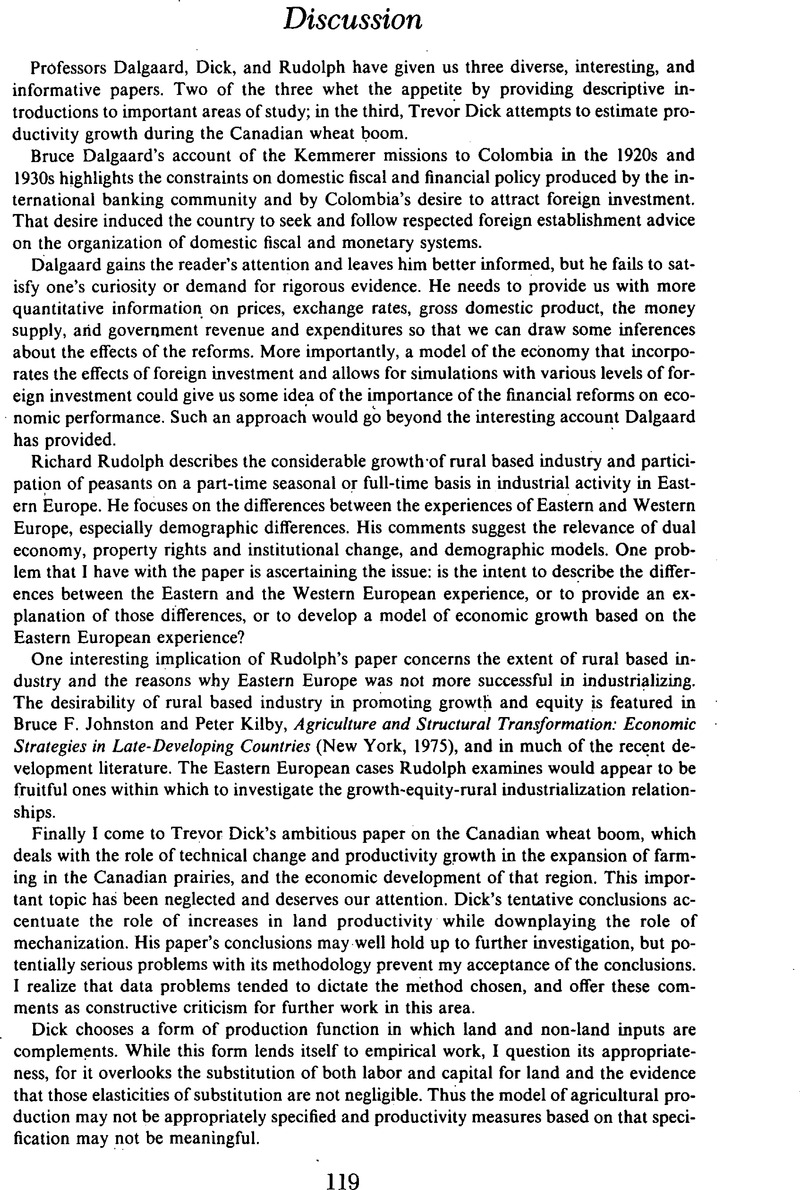No CrossRef data available.
Article contents
Discussion
Published online by Cambridge University Press: 11 May 2010
Abstract

- Type
- Papers Presented at the Thirty-Ninth Annual Meeting of the Economic History Association
- Information
- Copyright
- Copyright © The Economic History Association 1980
References
1 “See Jones, Ronald W., “A Three-Factor Model in Theory, Trade, and History,” in Bhagwati, Jagdish N., et al., eds., Trade, Balance of Payments and Growth: Papers in International Economics in Honor of Charles P. Kindleberger (Amsterdam, 1971), pp. 3–21Google Scholar.
2 Such a model can be found in Hueckel, Glenn R., “The Napoleonic Wars and Their Impact on Factor Returns and Output Growth in England, 1793–1815” (Ph.D. diss., Univ. of Wisconsin-Madison, 1972Google Scholar).
3 Kuznets, Simon, Modern Economic Growth: Rate, Structure, and Spread (New Haven, 1966), p. 1.Google Scholar


